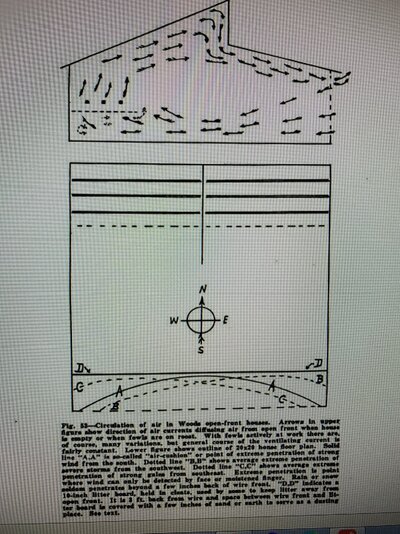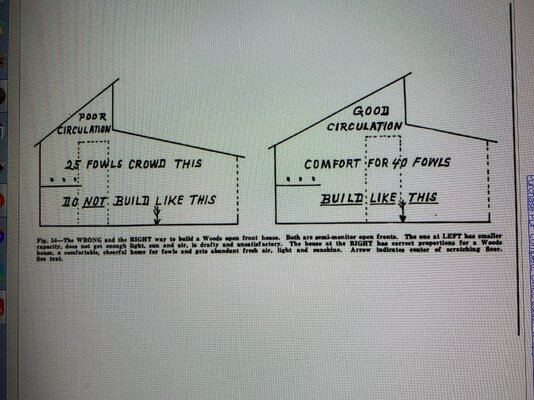I've seen one too and couldn't find it either.
I agree the winter air doesn't intrude but it does move through the back part. The difference being how slow it moves. Woods calls it "wafting gently", if I remember correctly - the air in the front section and along the floor of the back section is cold, like outside. The chickens breath out warm air, which rises. As it rises, it cools. As it cools, it sinks but it can't sink down on the chickens because they have continued to breath more warm air. So it wafts down the slope of the front roof. The warm air rising (and the cooling air sinking) pull (and push) fresh air in along the bottom of the open front)
This is not my understanding and I do not recall reading this in Woods' book. I have read descriptions of an "air cushion", although I think those were in threads on BYC. Also recall reading of holding a ribbon (or candle?) while in the back section as a test to illustrate the lack of air movement.
If the air were to move in the manner you describe the birds would be roosting in a draft albeit not a strong one. Also can say from personal experience that I have never felt movement of air while in the back section even on a windy winter day.







